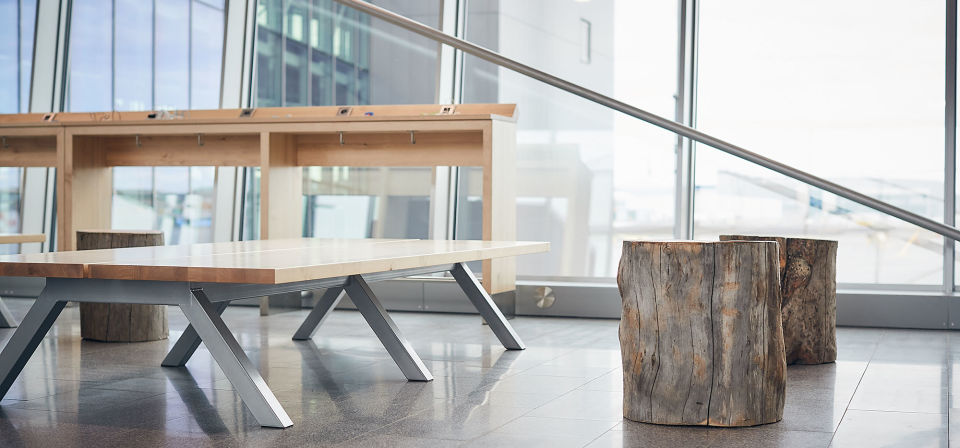I am nowadays, having a meal outside in the great outdoors while chatting with others and unwinding has become synonymous with outdoor eating areas. Thanks to the growing need for stunning vistas, fresh air, and a change of pace from inside monotony, this tendency has only gotten stronger in recent years. A welcoming outdoor dining area is largely dependent on the furniture choice. In addition to being functional, outdoor restaurant furniture is essential in determining a restaurant’s entire eating experience and visual atmosphere.
Evolution of outdoor restaurant furniture
Originally, outdoor furniture was primarily practical, made to withstand harsh weather conditions with little regard for aesthetics.
Materials like wrought iron and teak were favored for their durability but often lacked the comfort and style expected in dining settings. This evolution of outdoor dining furniture reflects a shift from purely functional designs to stylish pieces that enhance the dining experience.
However, as outdoor dining became more and more popular, particularly in climate-friendly areas, designers started to place equal emphasis on design and durability, which resulted in the creation of materials and building methods that could withstand outdoor conditions while providing comfort and style. More recently, weather-resistant wickers, aluminum alloys, and synthetic materials that mimic the appearance of natural wood without maintenance headaches have all been introduced.
Element of timeless design
The following essential components of timeless commercial outdoor furniture guarantee its ongoing appeal:
High-quality Materials: Because outdoor furniture is exposed to sunshine, rain, and temperature changes, material selection is essential.
Teak is still a popular choice due to its attractive grain and inherent resistance to dampness and insects. Because of their low weight, strength, and capacity to withstand corrosion, stainless steel and aluminum are highly prized materials for coastal and humid environments. Premium synthetic wickers look like real rattan but require less upkeep and are more weather-resistant.
Comfort and functionality: Comfort is crucial when choosing outdoor dining equipment. Ergonomic designs that provide diners with enough support and let them unwind improve the whole eating experience. By carefully considering elements like armrest shape, backrest angle, and seat height, comfort is enhanced without sacrificing functionality. The materials used to make cushions and upholstery are chosen for their resilience to outside elements without sacrificing comfort or style.
Aesthetic versatility: Classic outdoor furniture designs suit various outdoor environments and architectural types. Earth tones, beige, and grey are predominant examples of neutral colors that accentuate natural surroundings without overpowering them. The furniture’s timeless forms and simple lines guarantee that it will always look good despite fads in style.
Maintenance: Furniture for outdoor eating areas has to be simple to clean and care for. Stain-, fade-, and mold-resistant materials make maintenance easier and free up restaurant personnel time to concentrate on serving guests great meals rather than doing tedious maintenance work. Quick-drying textiles and non-porous surfaces extend outdoor furniture’s life and visual attractiveness.
Trends in outdoor restaurant furniture
Although outdoor restaurant furniture is based on timeless design principles, modern trends have an impact on how it evolves and adjusts to shifting consumer preferences:
Sustainable materials: Restaurants use eco-friendly materials like reclaimed wood, recycled plastic, and rattan that are sustainably sourced as part of a rising trend in furniture design. These materials appeal to guests looking for environmentally responsible eating experiences that align with environmental ideals. To reduce their negative effects on the environment and maximize durability and beauty, furniture makers are progressively implementing sustainable techniques into their manufacturing processes.
Flexibility & modularity: In outdoor dining areas, modular furniture designs that provide a variety of seating configurations are becoming increasingly popular. These designs are aimed at restaurants that need flexible layouts to suit different group sizes, social distancing needs, and seasonal variations in customer traffic. Sectional couches, ottomans, and movable tables are modular furniture that offer adaptability without sacrificing style coherence or comfort.
Integration of technology: To improve the eating experience, outdoor dining areas progressively integrate technology-driven amenities. The integrated speakers for background music, USB charging outlets, and movable lighting options provide a sleek and practical ambiance that appeals to tech-savvy customers. These features blend perfectly with outdoor furniture designs, adding practicality without removing the piece’s overall aesthetic appeal.
Personalisation & customisation: Many eateries are choosing to use furniture that can be customized to fit their brand and offer distinctive eating experiences. With personalized designs, branded finishes, and custom upholstery fabrics, restaurants may stand out without sacrificing their overall appeal. Beyond furniture choice, personalized touches may also include outside décor, signage, and landscaping, all of which work together to provide customers with an unforgettable eating experience.
The article Timeless appeal of commerical outdoor furniture first appeared in TravelDailyNews International.
